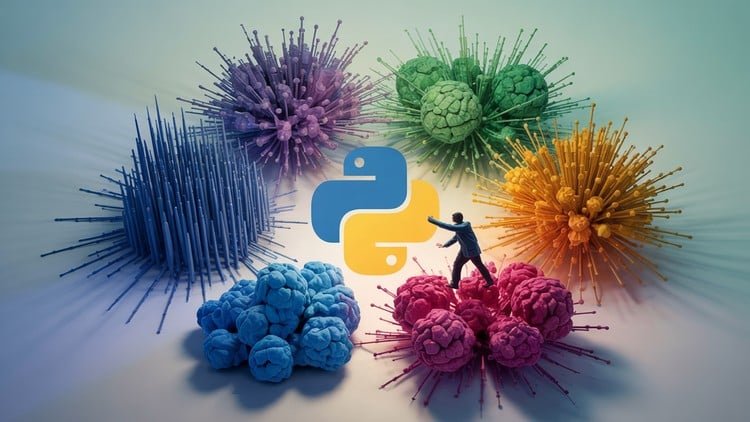If you’re looking to delve into the world of machine learning, specifically clustering and unsupervised learning, the "Clustering & Unsupervised Learning in Python" course on Udemy is a fantastic starting point. This course provides a comprehensive overview of the key concepts and techniques in unsupervised learning, all taught in the approachable and widely-used programming language, Python. Whether you’re new to data science or looking to enhance your skills, this course offers valuable insights and practical applications.
What you’ll learn
By enrolling in this course, you will gain a solid understanding of various clustering algorithms and how to apply them effectively using Python. Here are some of the key skills and technologies you will learn:
- Core Concepts of Unsupervised Learning: Understand the principles behind unsupervised learning and why it’s important in the realm of machine learning.
- Clustering Algorithms: Learn about popular clustering techniques such as K-Means, Hierarchical Clustering, DBSCAN, and others.
- Dimensionality Reduction: Discover the techniques like PCA (Principal Component Analysis) and t-SNE (t-Distributed Stochastic Neighbor Embedding) that help streamline data for better visualization and analysis.
- Working with Real-World Datasets: Gain hands-on experience by working with various datasets, which will help you understand the practical applications of the techniques learned.
- Python Libraries: Familiarize yourself with essential Python libraries such as Scikit-learn, Matplotlib, and NumPy, which are crucial for handling and visualizing data effectively.
Requirements and course approach
This course is designed for those who have a basic understanding of Python and programming concepts. While no advanced knowledge of machine learning is required, it certainly helps if you have a foundational grasp of data structures and algorithms.
The course adopts a hands-on approach, featuring engaging lectures paired with practical coding exercises. You will find that the instructor explains concepts clearly, using accessible language and relatable examples. Video lectures, quizzes, and practical assignments facilitate active learning and reinforce your understanding. Additionally, students can access various resources and datasets from GitHub, which will augment their projects.
Who this course is for
This course is ideal for a variety of learners, including:
- Beginners: If you are new to data science or machine learning, this course will introduce you to key concepts in a straightforward manner.
- Intermediate learners: Those with some prior exposure to programming and basic data science concepts who want to deepen their understanding of unsupervised learning.
- Data Analysts and Developers: Professionals aiming to integrate machine learning techniques into their work or enhance their analytics skills.
The course caters to anyone interested in discovering how to uncover patterns and insights from complex datasets using unsupervised learning techniques.
Outcomes and final thoughts
By the end of the "Clustering & Unsupervised Learning in Python" course, you’ll not only have a thorough understanding of various clustering methodologies but also practical experience with real-world applications. You’ll be able to confidently implement clustering algorithms to derive insights from unlabelled data and leverage dimensionality reduction techniques for better data visualization.
Overall, the course stands out for its approachable content, practical focus, and well-structured modules. It’s an excellent investment for anyone looking to explore the vast field of data science and machine learning, particularly in unsupervised learning. Whether you aim to enhance your career prospects or simply expand your knowledge, this course is a worthy addition to your learning portfolio.




